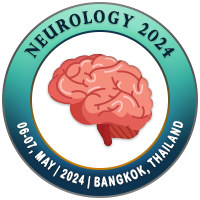
Hitoshi Sakano
University of Fukui, JapanTitle: Neural Circuit Formation and Olfactory Perception in Mice
Abstract
Odor information detected in the olfactory
epithelium is converted to a topographic map of activated glomeruli in the
olfactory bulb (OB). Although the
arrangement of glomeruli in the OB is genetically determined, the glomerular
structure is plastic and olfactory circuits can be modified by environmental
odor signals. If the pups are exposed to
a particular odorant during the critical period, responding glomeruli become
larger recruiting the dendrites of connecting projection neurons and
interneurons. This imprinting not only
increases the sensitivity to the exposed odor, but also imposes the positive
quality on imprinted memory. Odor
information represented as an odor map in the OB is then transmitted to the
olfactory cortex and amygdala for decision making to elicit behavioral
responses via two distinct pathways, innate and learned. For instinctive decisions, olfactory
information is directly delivered by mitral cells to the valence regions in the
amygdala, while for learned decisions, odor map is conveyed by tufted cells to
the anterior olfactory nucleus for identification of odors and recollection of
the associated memory scene. In this
presentation, I will summarize the recent progress in the study of neural
circuits and odor perception in mice.
Biography
Dr. Sakano received his Ph.D. degree from
Kyoto University in 1976. For his thesis
work. He investigated tRNA processing by isolating the temperature-sensitive
mutants of the ribozyme RNAase P in E. coli. From 1978 to 1981, he worked at
Basel Institute for Immunology in Switzerland on immunoglobulin genes to solve
the problem of antibody diversity. He
published five Nature article papers providing the evidence for combinatorial
and junctional diversification of antibody genes. He then moved to the
University of California at Berkeley as Assistant Professor in 1982 and was
promoted to the tenured Full Professor in 1992.
He relocated to University of Tokyo in 1994 changing his research field to
Neuroscience. He is currently Professor Emeritus at University of Tokyo and
Professor in Neuroscience at University of Fukui.

